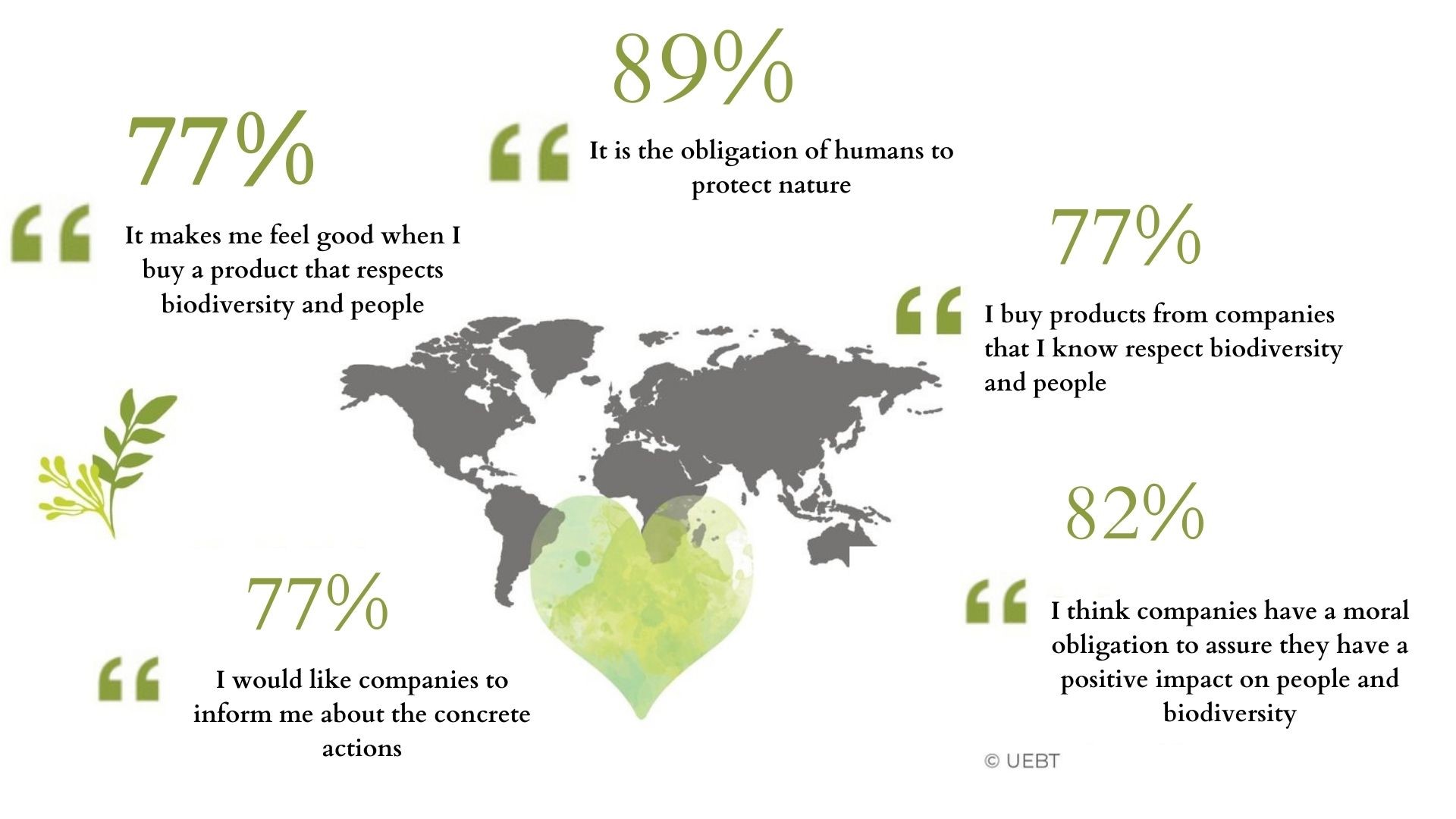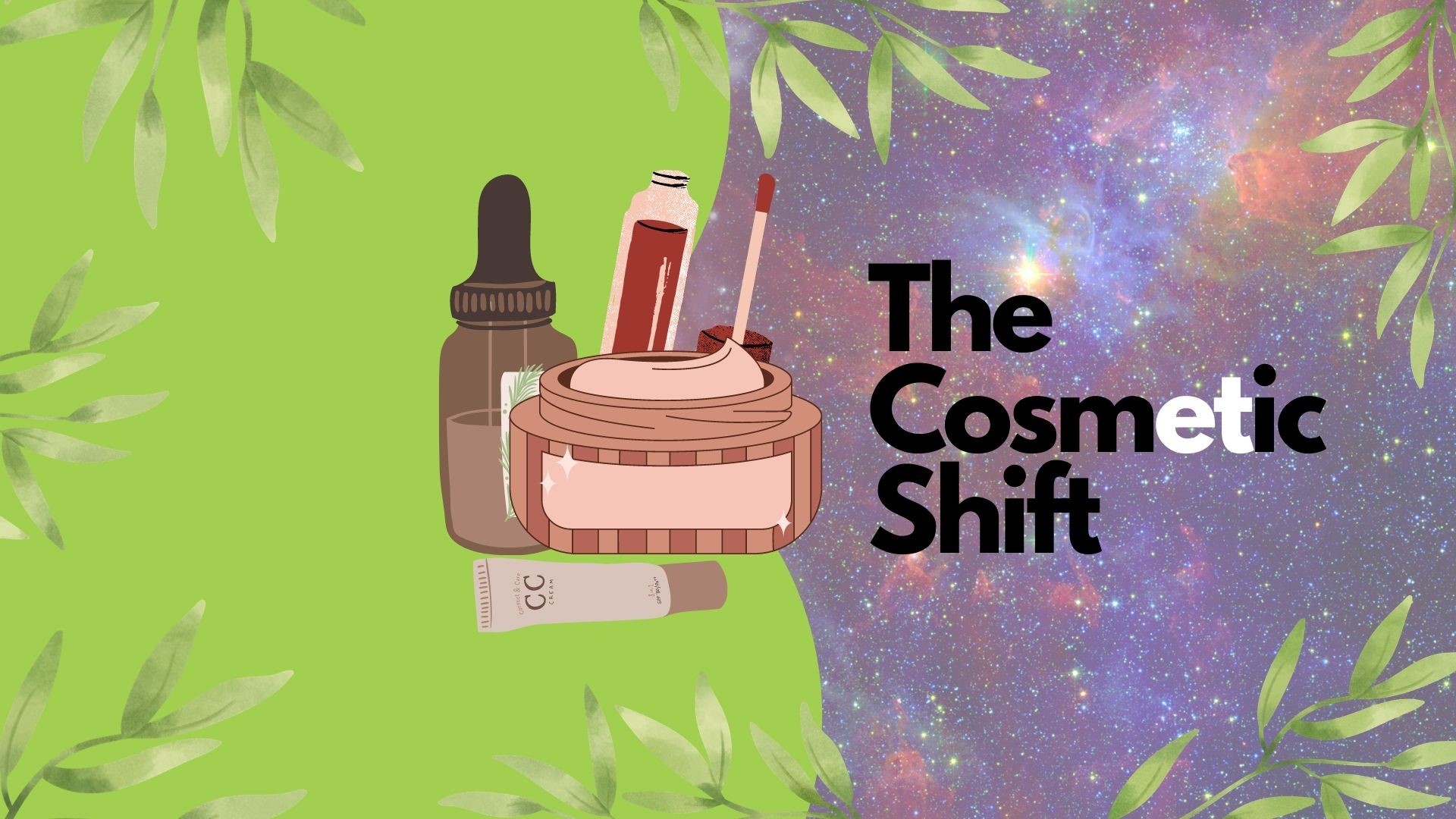
The Cosmetic Shift
When it comes to business, it’s always about putting the customer first and making sure there is a demand for the product or service you are providing. Over the last five years, an overall increase in the understanding of biodiversity has consumers expecting action from brands to better serve people and planet.

The results of the 2020 Biodiversity Barometer, are evidence of the shift in consumer awareness and understanding of biodiversity. The Union for Ethical BioTrade spoke with more than 74,000 people in 16 countries and found that 82% of consumers believe companies have a moral obligation to behave responsibly towards people and biodiversity.
With consumers becoming more aware, there is significant pressure on industries to take action for nature. From sourcing of raw materials to production and packaging, there are many ways the cosmetics industry affects biodiversity:
- Over-exploitation of natural resources and unsustainable farming practices can damage ecosystems and livelihoods.
- Toxic chemicals used in these products and pesticides used in growing raw materials can end up in our soil, air and water supply.
- Packaging of cosmetic and personal care products fill up landfills and can take years to breakdown.
To meet the demand of more environmentally friendly products, the cosmetic industry has to address these issues. But this is also an opportunity for brands to strengthen their business by ensuring that the resources they depend on are available for many generations to come.
Start at the source
Cosmetic companies should partner with of indigenous peoples and local communities when sourcing raw materials. Their traditional knowledge and skills can help conserve biodiversity through sustainable management of land and other resources.
By following the Nagoya Protocol, companies can ensure that the benefits from the use of raw materials and the associated traditional knowledge are shared equitably with the communities that provide them. In turn, this will give brands access to more and better-quality raw materials for more sustainable and cleaner beauty products. When working with suppliers, brands should be able to trace where the products come from, how they were sourced, their sustainability and the measures taken to protect biodiversity.
It is not only about how products are sourced but also how they’re packaged and used.
Many ingredients in cosmetics get washed down the drain and into our sewage systems, and if they cannot be broken down, they end up in the ocean and absorbed in our soils. The packaging of these products also piles up in landfills where they can take years just to breakdown, often releasing toxic chemicals into the soil and waterways. Brands can act by switching to biodegradable packaging and avoiding the use of toxic chemicals.

Purchasing power
As consumers we can also make a difference by educating ourselves and others on the affects our choices have on biodiversity.
Consumers can act by knowing how to properly use and dispose of the products, asking companies to make changes and be more transparent about their products, choosing the right products and creating a demand for cleaner, greener and more nature-friendly products.
The effects of cosmetics on biodiversity are far reaching, however change is possible – and it’s happening. With a nudge from consumers, cosmetic companies are moving towards sustainability. We’ve seen some brands joining initiatives such as the Responsible Beauty Initiative (RBI), a global initiative focused on sustainable procurement. Now it’s up to all of us to help the industry take bigger steps and embrace a cleaner beauty for our planet and for our future.
More information:
Bioscience at a Crossroads: The Cosmetics Sector
Access and Benefit Sharing - Key Points for Policy-Makers - The Cosmetics Industry